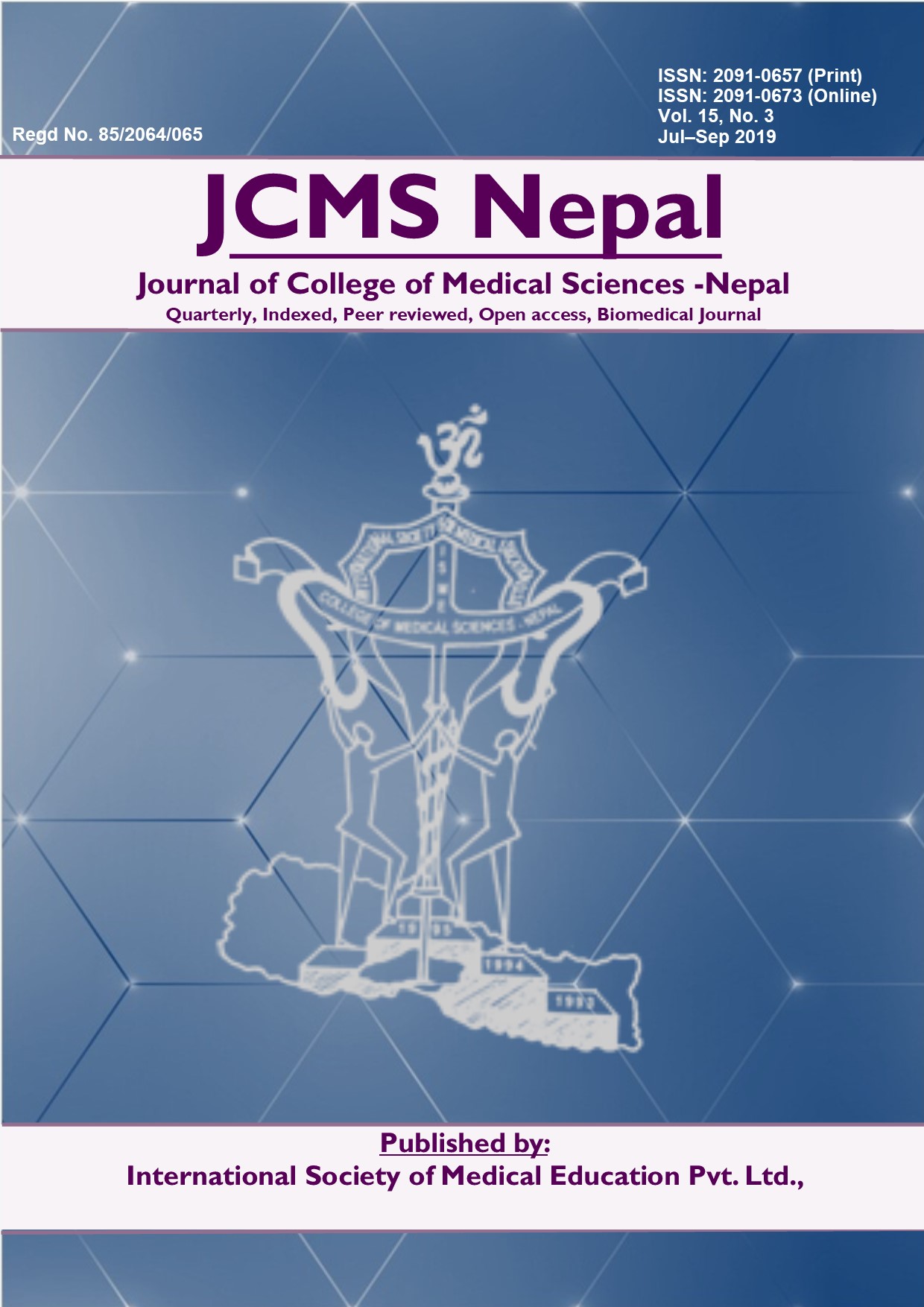Bacteriological Profile of Burn Patients and Antimicrobial Susceptibility Pattern of their Wound Isolates at Nepal Cleft and Burn Center
DOI:
https://doi.org/10.3126/jcmsn.v15i3.24363Keywords:
Antimicrobial susceptibility, burn infection, bacteriological profileAbstract
Background: Burn infections are the major causes of morbidity and mortality in burn patients. The infectious agent could be both Gram positive and Gram negative bacteria. The aim of this research was to study the bacteriological profile of burn patients and anti-microbial susceptibility pattern of their wound isolates.
Methods: This cross-sectional study was conducted in Kirtipur Hospital, Nepal from January 1st to March 31st 2019. A total of 109 burn patients were included and their wound swabs were collected at the time of admission. All isolates were identified by standardized microbiological procedures. Anti-microbial susceptibility tests were performed by Kirby Bauer disc diffusion method.
Results: Of 109 burn wound samples, 56 (59%) yielded culture growth and the Gram negative isolates were more common than Gram positives (77% vs. 23%). The most common organism isolated was Klebsiella spp. (25%) followed by Acinetobacter spp. (21%) and Staphylococcus aureus (18%). Most burn wound isolates were of resistant strain. Particularly, highly resistant strain of Acinetobacter spp. were isolated, most of which were sensitive to Tigecycline, Polymyxin B and Colistin only.
Conclusion : Gram negative isolates were common in burn wound isolates and the antibiotic susceptibility pattern was different for different organisms. The use of antimicrobials should be judicious to further not escalate the problem of antimicrobial resistance in the healthcare settings.
Downloads
Downloads
Published
How to Cite
Issue
Section
License
This license enables reusers to copy and distribute the material in any medium or format in unadapted form only, for noncommercial purposes only, and only so long as attribution is given to the creator.




